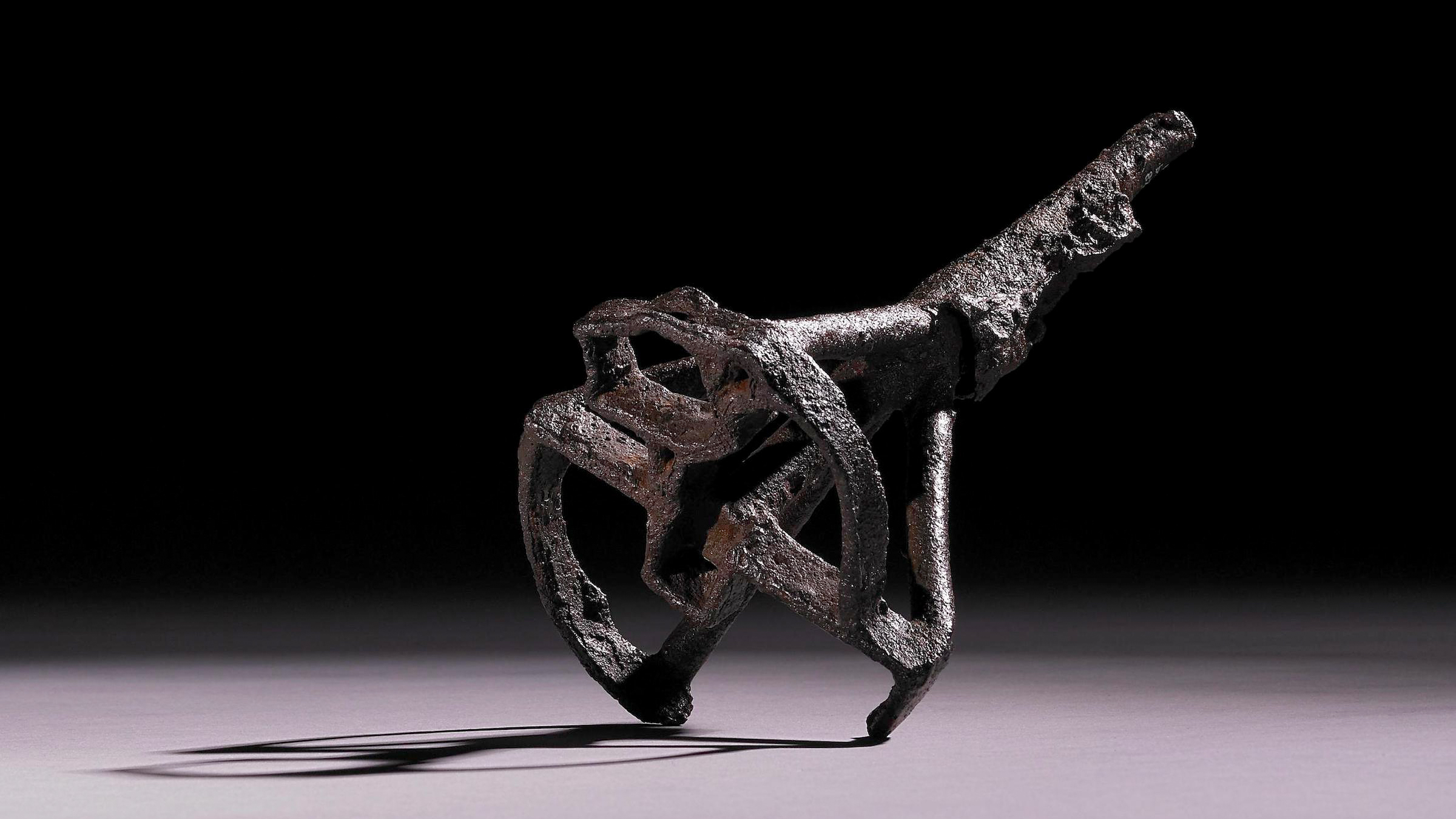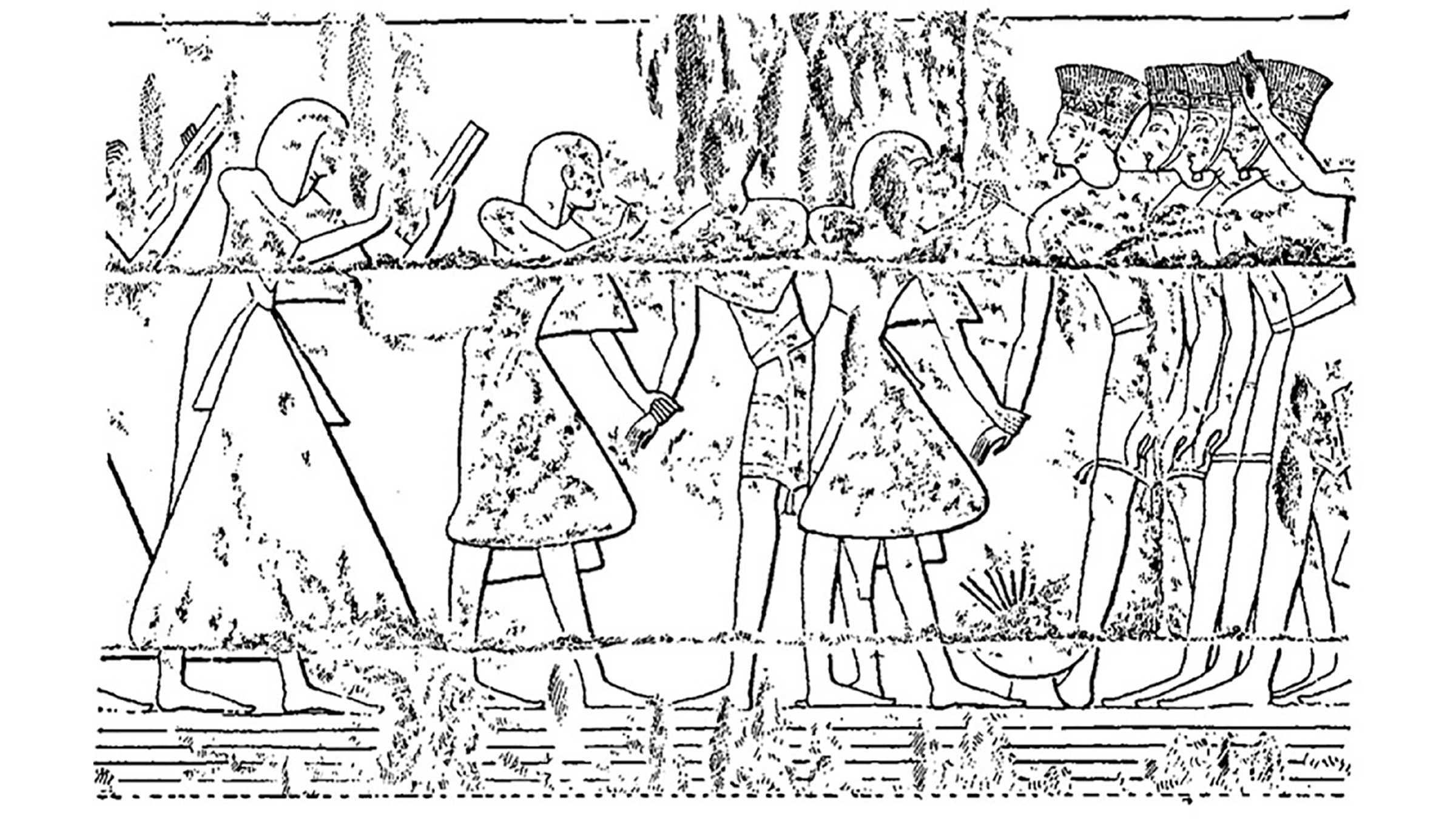Ancient Egyptians may have used branding irons on human slaves
Small branding irons from ancient Egypt were likely used to mark the skin of human slaves, a new study suggests.

Small branding irons from ancient Egypt were likely used to mark the skin of human slaves, a new study suggests.
Several ancient texts and illustrations, as well as 10 branding irons dating to 3,000 years ago, suggest that ancient Egyptians branded slaves. These branding irons, actually made of bronze, are now in the collections of the British Museum and the Petrie Museum of Egyptian Archaeology at University College London.
The branding irons are thought to date roughly to Egypt's 19th dynasty, from around 1292 B.C. until the 25th dynasty, which ended in 656 B.C., according to a study published Oct. 15 in The Journal of Egyptian Archaeology.
Related: 50 graves of slaves who toiled at a Roman villa unearthed in England
Until now, most Egyptologists had assumed that they were used to brand cattle — a practice seen in ancient Egyptian paintings — or perhaps horses. But the brands in the museums are too small for that purpose, said Ella Karev, an Egyptologist at the University of Chicago and the study's author.
"They are so small that it precludes them from being used on cattle or horses," she told Live Science. "I'm not excluding the possibility, but we have no evidence of small animals like goats being branded, and there is so much other evidence of humans being branded."
Modern cattle-branding guidelines call for a brand that's larger than at least 4 inches (10.6 centimeters) long so the scar it leaves won't become illegible as a calf grows — an issue that the ancient Egyptians likely knew about, too.
Sign up for the Live Science daily newsletter now
Get the world’s most fascinating discoveries delivered straight to your inbox.
But the brands in the British Museum and the Petrie Museum are typically a third of that size — far too small for cattle, Karev wrote. The cattle brands in ancient Egyptian paintings are also square or rectangular, and look larger than the brands in the museums.
Branding people
Some of the ancient Egyptian branding irons are almost exactly the same size as branding irons used by Europeans on African enslaved people during the trans-Atlantic slave trade many centuries later, Karev said. "Human branding-irons from the mid- and late 19th century parallel the size and shape of the smaller branding irons discussed here," she wrote in the study.
Ancient Egyptian writings also talk about "marking" slaves, which was assumed to be a reference to the practice of tattooing, Karev told Live Science. For instance, branding is seen in a depiction of prisoners of war in a carving at Medinet Habu near Luxor in Upper (southern) Egypt dated to the 20th dynasty, perhaps around 1185 B.C.

But research shows that tattooing in ancient Egypt was almost exclusively performed on women and for religious purposes, she said, and the marking of prisoners of war in the Medinet Habu carving is unlikely to be tattooing.
"Practically speaking, 'hand-poking' a tattoo [without a tattoo machine] takes quite a lot of time and skill — and if you're doing that on a large scale, it's not easily replicable," Karev said. "It would make much more sense for this to be branding."
Moreover, the tools used to mark the prisoners in the Medinet Habu carving look different from the cattle brands used in ancient Egyptian paintings. It's been suggested that's because they were needles for tattooing, and that the carving shows them placed in a bowl of pigment. But Karev argues that the depiction instead shows small brands being heated to red hot in a portable heater known as a brazier.
Egyptian slavery
The practice of slavery in Egypt was very different from the modern conception of slavery informed by the trans-Atlantic slave trade, Karev said.
"The way that we define slavery, serfdom, indentured servitude, debt bondage — all of these are modern classifications and categorizations," she said. "The ancient Egyptians did not have these classifications, and so it is up to historians to figure out what, in context, is actually going on."
While ancient writings state that people were sometimes bought and sold as property, and perhaps with the land they subsisted on — what are called "serfs" today — there's also evidence that the dowry for marriage of a slave might be paid by their owner and that many slaves were adopted into families.
In addition, there is evidence that people were often manumitted, or freed from slavery, and became regular members of Egyptian society, she said.
In such cases, the brand of a slave might be a "permanent marker of an impermanent status," Karev said. "They clearly had no issue with an ex-slave adopting a new name, becoming fully Egyptian, marrying an Egyptian free person and moving up the ranks."
Antonio Loprieno, an Egyptologist at the University of Basel in Switzerland who wasn't involved in the study, said the paper was a "fantastic piece of scholarship."
Only foreigners, rather than native Egyptians, seem to have been marked in this way, so "assuming that the branding-bronzes were used for humans … is empirically more probable at this time, where the number of foreign workers and soldiers in Egypt was at its peak," he told Live Science in an email.
Loprieno, too, noted that modern ideas of slavery did not apply in Egypt at this time and that further evidence is needed of the "moral connotations" of slavery in ancient Egypt.
Tom Metcalfe is a freelance journalist and regular Live Science contributor who is based in London in the United Kingdom. Tom writes mainly about science, space, archaeology, the Earth and the oceans. He has also written for the BBC, NBC News, National Geographic, Scientific American, Air & Space, and many others.









